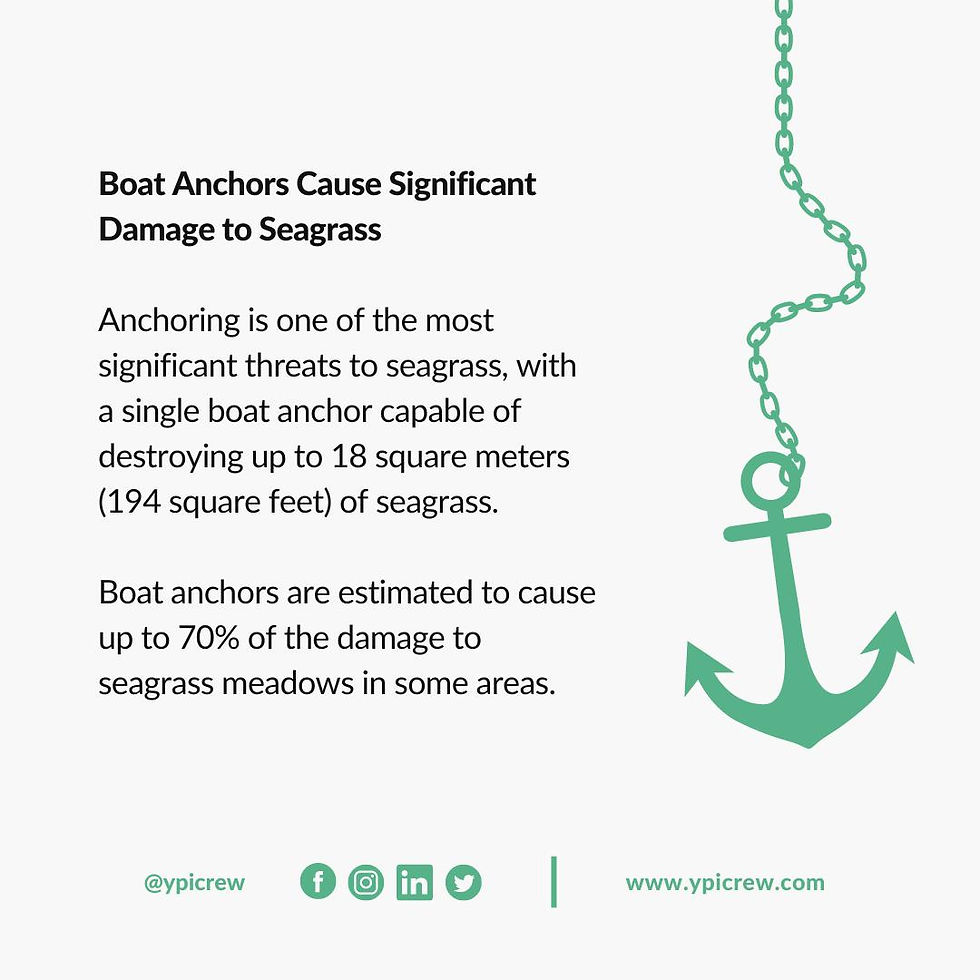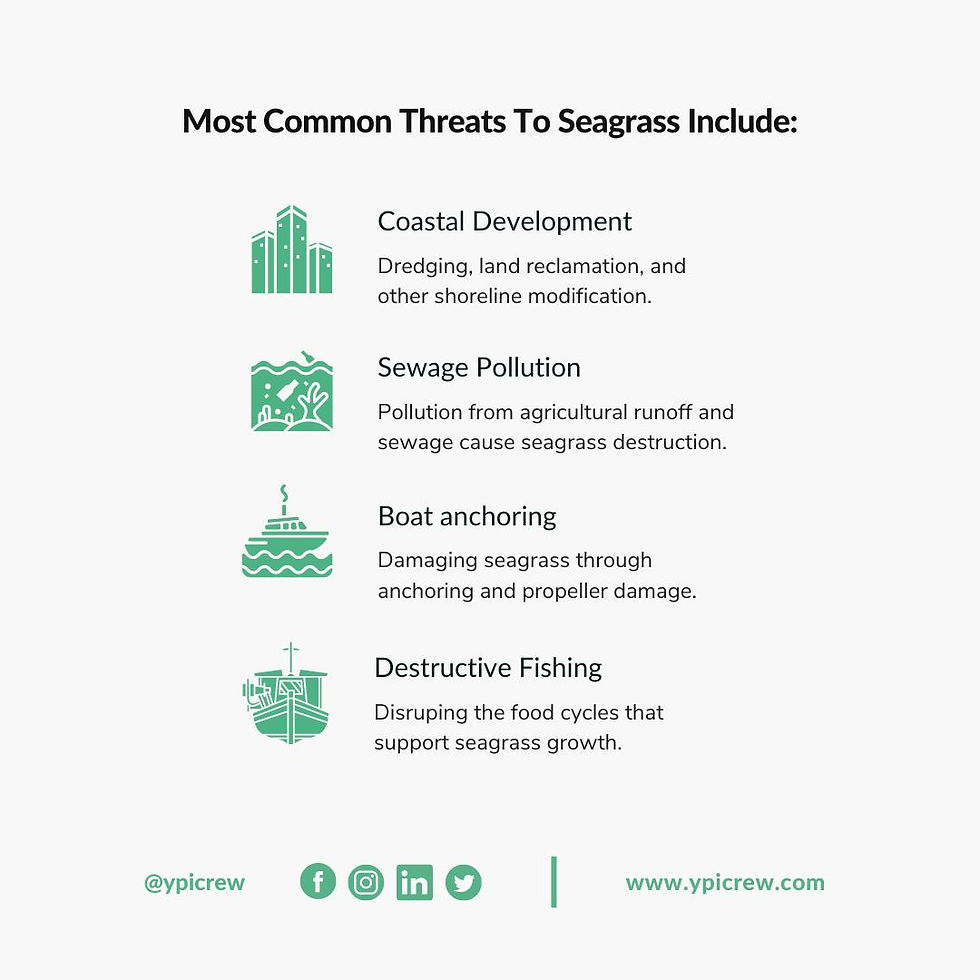- YPI CREW

- Mar 1, 2023
- 2 min read
Seagrass is a common feature of shallow coastal waters, such as bays, coves, and lagoons, where yachts often anchor. As a yacht crew member, you may have encountered seagrass meadows, which can be recognized by their long, thin, green leaves that resemble blades of grass.
Since seagrass tends to grow in shallow waters used for anchoring yachts, this unfortunately means that they can be easily damaged by anchors and propellers. This can be very harmful not only to marine life but to the global ecosystem as seagrass meadows play a critical role in producing oxygen, absorbing greenhouse gas emissions, and supporting a diverse array of marine life. These habitats also provide livelihoods for millions of people and are a key component in the global effort to combat climate change.
This is why it is important for yacht crew to be aware of the location and significance of seagrass meadows and to actively take measures to protect them.
Here are some things you can do to protect our seagrass meadows:
1. Avoid anchoring in seagrass beds
Seagrass beds can be easily damaged by anchors so yachts should avoid anchoring in seagrass areas by using designated mooring buoys or anchoring in areas where seagrass is absent or less abundant. Seagrass meadows can be recognized by their dense and lush underwater vegetation, which may appear as a green or brownish colour from the surface. These areas are often found in shallow coastal waters, such as bays, lagoons, and estuaries.
If anchoring in a seagrass area is necessary, yachts can reduce the risk of damage by anchoring in sandy areas or using specialized anchoring systems that minimize impact on seagrass meadows.

2. Use caution when operating the yacht
Propellers and hulls can easily damage seagrass, disrupting the balance of the marine life that depends on it. To reduce the risk of damage, you should maintain a safe distance from seagrass meadows, avoid high speeds in seagrass areas and navigate through seagrass meadows slowly and carefully. It's also essential for yachts to be aware of the water depth and the location of seagrass meadows to avoid running aground or getting too close to the seafloor.
3. Dispose of waste properly
Waste, such as plastic and oil, can cause significant harm to seagrass, disrupting the balance of the ecosystem and harming marine life. This is why you should never dispose of any waste around seagrass areas and always follow proper procedures for waste disposal.
Another thing that will help preserve seagrass is using eco-friendly cleaning products, so if any products should end up being released in the water, the impact to the environment is minimised.

4. Support organizations that work to protect seagrass or get involved in one of their projects
Yacht crew can support organizations that work to protect and restore seagrass beds, such as Project Seagrass. You can either donate towards their work or even get involved in one of the projects they have open.
They have also released a tool called SeagrassSpotter that helps identify the seagrass in the area you are in and allows you to report the sightings of any seagrass beds.


















.jpg)